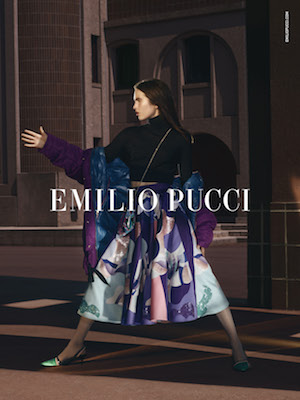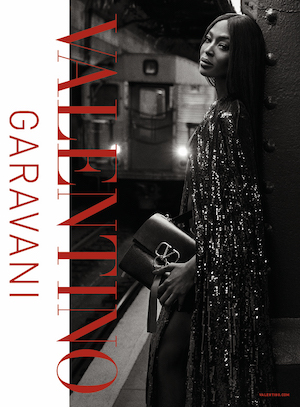Art & Culture
Damien Hirst: On Diamonds, Death and Doha
by Lisa Travell
December 14, 2013
Damien Hirst is widely acclaimed as one of the most successful, albeit controversial, artists of our time. His contemporary works are often shocking and thought provoking, with many based around the themes of life and death. He took the British art scene by storm in the 1980s, challenging traditional concepts and permanently altering people’s perception of art.
As part of the Qatar UK 2013 Year of Culture, Hirst brings together works spanning 25 years of his artistic career in his exhibition Relics – his first solo show in the Middle East. Notorious for his fascination with death, the inevitable decay of our bodies and our own unquestioning faith in pharmaceuticals, Hirst’s exhibition includes many of his iconic works, including his spot and spin paintings, medicine cabinets and butterfly works, along with previously unseen exhibits.
Hirst was approached by the Qatar Museums Authority (QMA), under the patronage of H.E. Sheikha Al Mayassa Bint Hamad Al Thani, to hold an exhibition to coincide with the unveiling of The Miraculous Journey, his mammoth bronze sculptural installation depicting fertilization of an egg through to birth for the new Sidra Medical Center. A great admirer of this country, Hirst is excited to exhibit here, “Qatar is an extraordinary place; it’s had so much growth in such a short space of time. It was an incredibly exciting project as the space was designed specifically for the show,” he enthuses.
It’s evident that Hirst is proud to be part of Qatar’s cultural collaborations. “Being part of Sheikha Al Mayassa’s program of cultural initiatives is an honor because she completely understands how important art is in creating a dialogue across different cultures,” he says. In Hirst’s opinion art speaks all languages, “All art is fundamentally about life, what else can it be about? While some of my work may deal with themes, or imagery more familiar to the West, it’s really all about love, beauty, fear and death, which are all completely universal and transcend cultural barriers – a butterfly is beautiful in every language. I’ve always wanted a big visual impact with my work and hopefully I’ve succeeded here, it makes no difference what nationality the artist is.”
The exhibition features the world-famous diamond skulls, For the Love of God (2007) and For Heaven’s Sake (2008), which are both simultaneously vulgar and engaging. Hirst’s obsession with death is obvious in these pieces and it’s a central theme throughout most of his work. “It’s the most universal theme there is,” he explains. “In life, we can’t really comprehend the concept of our own mortality and a lot of my work is about this fundamental difficulty.”
Although some critics view Hirst’s works as trivializing death, he actually wishes to promote acceptance of the inevitable and an appreciation of life. “The diamond skulls are heavily inspired by the sense of how decorating death, to the point that it becomes something beautiful, seems to be a great way to tackle this unacceptable idea,” he explains. “The prevalence of death in my work might seem morbid, but I’ve actually always hoped it will serve to invigorate people. A lot of it I see as more of a celebration of life rather than something bleak.” For the Love of God is still one of Hirst’s preferred pieces, “I still love the diamond skull, which to me feels like a measure of victory over death. Even though it acts as a memento mori, in many ways it’s the most alive piece I’ve ever done.”
Death is something Hirst has struggled to accept, which is reflected in some of his exhibits in Relics. Pictured with a severed head in With Dead Head (1991), he admits this was the time in his life when he was trying to come to terms with the unacceptable notion of death. “I think I have always been fascinated by death, but it really intensified when I was a teenager after seeing Francis Bacon’s paintings in art books. After that I became very interested in pathology and in visiting anatomy museums to make drawings of the corpses. It was the first time I really attempted to confront the idea of death,” says Hirst.
In deciding which pieces should be included in the exhibition Hirst says they were sensitive of the local culture but generally he was pleased that some of his more disturbing works were deemed acceptable. “I think it’s amazing that QMA took the decision not to shy away from some of the pieces that might be seen as shocking. What’s interesting is the cross-cultural similarities, generally people find the same things shocking wherever they’re from in the world.”
Hirst specifically refers to A Thousand Years (1990); a work that features a severed cow’s head in a glass case with hundreds of flies, which reproduce then inevitably die via an insect-o-cutor. Taken at face value it’s an alarming piece that challenges the boundaries of art; on contemplation it’s a complete lifecycle from gestation, to birth, then death. “I’ve noticed that almost everyone finds watching the flies dying is really uncomfortable, despite fly-catchers being common in homes and restaurants across the globe,” he states. When asked about his favorite piece, Hirst tells me, “A Thousand Years will always be very important to me because it was the first piece I made that was actually about something important.”
On display for the first time is Hirst’s largest shark sculpture, Leviathan (2006 – 2013). “It’s been really exciting to show my largest ever shark sculpture as I’ve had the basking shark for seven years after the Natural History Museum gifted it to me, it was found washed up on a beach in 2006.” The Physical Impossibility of Death in the Mind of Someone Living (1991), is one of Hirst’s earlier shark sculptures, he explains his motivation behind these works as “an attempt to describe that feeling, that ultimate fear of death”. Viewing these works you indeed confront fear, personified by this deadly creature of the deep, as you stare into its cavernous jaws. “Even the idea of fear itself is terrifying to a lot of people,” says Hirst, “I’ve always been interested in the way we deal with death in the West. I love Mexican culture and the way it walks hand in hand with death, celebrating it rather than denying it.”
The exhibition has been very well received in Doha to date. “It’s fantastic that people have felt curious,” says Hirst of the Qatar crowds flocking to see his works. Asked if he thinks children should be excluded from the exhibition he’s adamant this should not be the case. “Children are our greatest critics and at the end of the day I want the art to have a ‘wow’ factor, which is appreciated by kids more than anyone else!”
This is not the last we have seen of Hirst’s captivating works; he has just completed a series of paintings in which insects and spiders are arranged in intricate geometric patterns, inspired by Dante’s vision of the afterworld, ‘Inferno’. As with the majority of Hirst’s art they promise to evoke a morbid magnetism within us all. “They are beautiful and horrific at the same time, and simultaneously draw you in and repel you,” says Hirst.
Love or hate his works, there is undeniably a stroke of genius in art that prompts such emotional reactions, either positive or negative, and that’s just what drives Hirst, “I love art that you can love and hate, or art that you can’t avoid.”



































